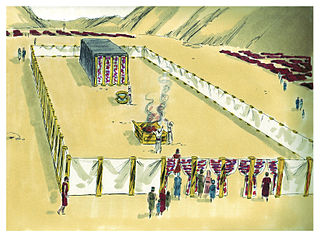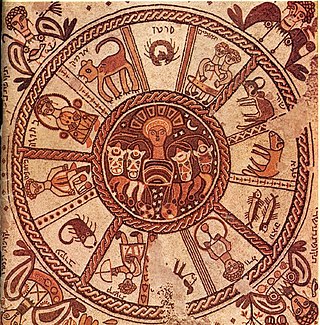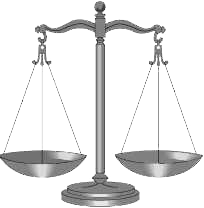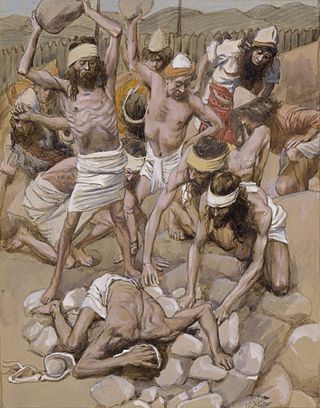
Various forms of witchcraft and divination are mentioned in the Hebrew Bible (Tanakh or Old Testament), which are expressly forbidden.

Various forms of witchcraft and divination are mentioned in the Hebrew Bible (Tanakh or Old Testament), which are expressly forbidden.
Laws prohibiting various forms of witchcraft and divination can be found in the books of Exodus, Leviticus and Deuteronomy. These include the following (as translated in the Revised JPS, 2023 :
The forms of divination mentioned in Deuteronomy 18 are portrayed as being of foreign origin; this is the only part of the Hebrew Bible to make such a claim. [5] According to Ann Jeffers, the presence of laws forbidding necromancy proves that it was practiced throughout Israel's history. [6]
The exact difference between the three forbidden forms of necromancy mentioned in Deuteronomy 18:11 is a matter of uncertainty; yidde'oni ("wizard") is always used together with ob ("consulter with familiar spirits"), [7] and its semantic similarity to doresh el ha-metim ("necromancer", or "one who directs inquiries to the dead") raises the question of why all three are mentioned in the same verse.[ citation needed ] The Jewish tractate Sanhedrin makes the distinction that a doresh el ha-metim was a person who would sleep in a cemetery after having starved himself, in order to become possessed. [8]
A prophetic passage in the Book of Micah states that witchcraft and soothsaying will be eliminated in the Messianic Age (Micah 5:12).

According to Abrahamic religions, Aaron was a prophet, a high priest, and the elder brother of Moses. Information about Aaron comes exclusively from religious texts such as the Hebrew Bible, the New Testament, and the Quran.

Necromancy is the practice of magic involving communication with the dead by summoning their spirits as apparitions or visions for the purpose of divination; imparting the means to foretell future events and discover hidden knowledge. Sometimes categorized under death magic, the term is occasionally also used in a more general sense to refer to black magic or witchcraft as a whole. In fictional settings such as Dungeons & Dragons, or fantasy video games, it is associated with the reanimation of corpses often meant to be used as weapons.
Christian views on magic vary widely among Christian denominations and among individuals. Many Christians actively condemn magic as satanic, holding that it opens the way for demonic possession. Some Christians simply view it as entertainment. Conversely, some branches of esoteric Christianity actively engage in magical practices.
Incest in the Bible refers to sexual relations between certain close kinship relationships which are prohibited by the Hebrew Bible. These prohibitions are found predominantly in Leviticus 18:7–18 and 20:11–21, but also in Deuteronomy.
In the Hebrew Bible, the Urim and the Thummim are elements of the hoshen, the breastplate worn by the High Priest attached to the ephod. The pair are used frequently in the old testament, in Exodus 28:30 through God's instruction to Aaron on how to adorn his breastplate worn in the holy place; in 1 Samuel 14:41 by King Saul to determine who was at fault for breaking the army's fast; and Ezra 2 to determine whether those who claimed to be the descendants of the priests of Israel were truly of that class. The Lights and Perfection are sometimes connected by scholars with cleromancy, although it is equally likely no casting was physically done, and the participants of Lights and Perfection waited for a sign to answer a question or reveal the will of God. Modern scholars have noted the meaning of Lights and Perfection as being epithets for Jesus Christ, both the Light and Truth (perfection). Urim and Thummim is the motto of Yale University; the seal of the school shows both the Hebrew and Latin words.
Cleromancy is a form of sortition in which an outcome is determined by means that normally would be considered random, such as the rolling of dice (astragalomancy), but that are sometimes believed to reveal the will of a deity.
The Hebrew Bible is considered a holy text in most Abrahamic religions. It records a large number of events and laws that are endorsed or proscribed by the God of Israel. Judaism teaches that the Torah contains 613 commandments, many of which deal with crime and punishment, but only the Noahide Laws apply to humanity in general. Most Christian denominations have also adopted some of these directives, such as the Ten Commandments and Great Commandment, while a minority believes all Old Covenant laws have been abrogated.
Capital punishment in traditional Jewish law has been defined in Codes of Jewish law dating back to medieval times, based on a system of oral laws contained in the Babylonian and Jerusalem Talmud, the primary source being the Hebrew Bible. In traditional Jewish law there are four types of capital punishment: a) stoning, b) burning by ingesting molten lead, c) strangling, and d) beheading, each being the punishment for specific offenses. Except in special cases where a king can issue the death penalty, capital punishment in Jewish law cannot be decreed upon a person unless there were a minimum of twenty-three judges (Sanhedrin) adjudicating in that person's trial who, by a majority vote, gave the death sentence, and where there had been at least two competent witnesses who testified before the court that they had seen the litigant commit the offense. Even so, capital punishment does not begin in Jewish law until the court adjudicating in this case had issued the death sentence from a specific place on the Temple Mount in the city of Jerusalem.
In Judaism, the korban, also spelled qorban or corban, is any of a variety of sacrificial offerings described and commanded in the Torah. The plural form is korbanot, korbanoth, or korbanos.

Leviticus 18 deals with a number of sexual activities considered abominable, including incest and bestiality. The chapter also condemns Moloch worship. It is part of the Holiness Code, and its sexual prohibitions are largely paralleled by Leviticus 20, except that chapter 20 has more emphasis on punishment.

Astrology has been a topic of debate among Jews for over 2000 years. While not a Jewish practice or teaching as such, astrology made its way into Jewish thought, as can be seen in the many references to it in the Talmud. Astrological statements became accepted and worthy of debate and discussion by Torah scholars. Opinions varied: some rabbis rejected the validity of astrology; others accepted its validity but forbid practicing it; still others thought its practice to be meaningful and permitted. In modern times, as science has rejected the validity of astrology, many Jewish thinkers have similarly rejected it; though some continue to defend the pro-astrology views that were common among pre-modern Jews.

Yitro, Yithro, Yisroi, Yisrau, or Yisro is the seventeenth weekly Torah portion in the annual Jewish cycle of Torah reading and the fifth in the Book of Exodus. The parashah tells of Jethro's organizational counsel to Moses and God's revelation of the Ten Commandments to the Israelites at Mount Sinai.

Kedoshim, K'doshim, or Qedoshim is the 30th weekly Torah portion in the annual Jewish cycle of Torah reading and the seventh in the Book of Leviticus. It constitutes Leviticus 19:1–20:27. The parashah tells of the laws of holiness and ethical behavior, repeats the ten commandments, and describes penalties for sexual transgressions. The parashah is made up of 3,229 Hebrew letters, 868 Hebrew words, 64 verses, and 109 lines in a Torah Scroll.

Shofetim or Shoftim is the 48th weekly Torah portion in the annual Jewish cycle of Torah reading and the fifth in the Book of Deuteronomy. It comprises Deuteronomy 16:18–21:9. The parashah provides a constitution—a basic societal structure—for the Israelites. The parashah sets out rules for judges, kings, Levites, prophets, cities of refuge, witnesses, war, and unsolved murders.

The Bible contains many references to slavery, which was a common practice in antiquity. Biblical texts outline sources and the legal status of slaves, economic roles of slavery, types of slavery, and debt slavery, which thoroughly explain the institution of slavery in Israel in antiquity. The Bible stipulates the treatment of slaves, especially in the Old Testament. There are also references to slavery in the New Testament.

Thou shalt not kill, You shall not murder or Do not murder (CSB), is a moral imperative included as one of the Ten Commandments in the Torah.
Forbidden relationships in Judaism are intimate relationships which are forbidden by prohibitions in the Torah or rabbinical injunctions.

Capital punishment in the Bible refers to instances in the Bible where death is called for as a punishment and also instances where it is proscribed or prohibited. A case against capital punishment can be made from John 8, where Jesus speaks words that can be construed as condemning the practice. There are however many more Bible verses that command and condone capital punishment, and examples of it being carried out. Sins that were punishable by death include homicide, striking one's parents, kidnapping, cursing one's parents, witchcraft and divination, bestiality, worshiping other gods, violating the Sabbath, child sacrifice, adultery, incest, and male homosexual intercourse.
The practice of witchcraft in the Middle East has a long history. In ancient Judaism, there existed a complex relationship with magic and witchcraft, with some forms of divination and mystical practices accepted, yet others viewed as forbidden or heretical. In the medieval Middle East, under Islamic and Christian influences, witchcraft's perception fluctuated between healing and heresy, revered by some and condemned by others. In the present day diverse witchcraft communities have emerged.